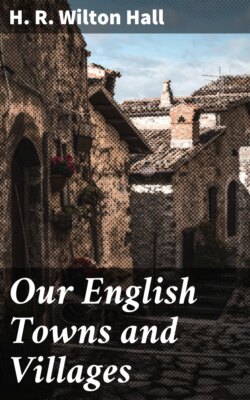Читать книгу Our English Towns and Villages - H. R. Wilton Hall - Страница 12
На сайте Литреса книга снята с продажи.
CHAPTER VIII
ANGLO-SAXON TUNS AND VILLS
ОглавлениеTable of Contents
1. A good many Britons no doubt settled down with the Saxons as slaves, and that probably accounts for so many of the natural features of the country—the rivers and hills—keeping their old British names. The British villages must have had names, but those villages were apparently destroyed, and the slaves would be settled near the homesteads which their conquerors set up.
2. In fixing on a place for a "tun" the Saxons would choose a valley rather than a hill, usually near a running stream, or a plentiful supply of water. At the present time nearly all over England we can find villages which have not been touched by modern improvements and alterations; and most of these show something even now of their Saxon origin.
3. For instance, in the county of Rutland there is a village named Exton, which has for many centuries kept several features which show its connection with Saxon days. Its name Ex-ton seems to be compounded of the British word "ex", which means "water", and the Saxon "ton" or "tun", which means the "enclosure"—"the tun by the water". There, sure enough, flowing by the village, is the River Gwash; just such a stream as the Saxons loved. In the middle of the village is the triangular open space, or village green. Round it the houses are thickly clustered together, with hardly any garden ground at the back or in front, and most of them with none at all. Outside the ring of houses are small grass fields or closes, where calves and cows feed, and poultry run. These little fields form a kind of ring round the village, and the hedges enclosing them represent the old fence of Saxon days, which formed the "tun". Beyond this are wider pasture-grounds and big plough-lands, stretching away in several directions up the gentle slopes.
